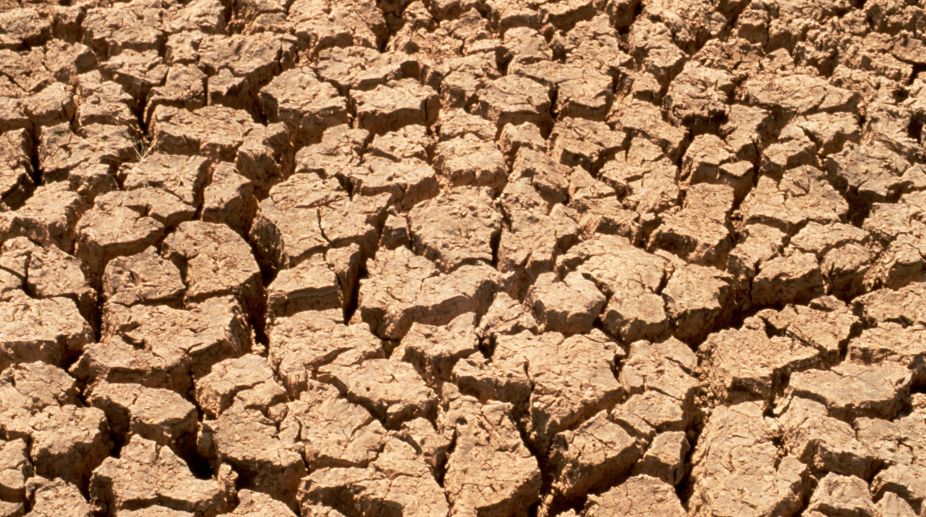Among the various regions affected most by drinking water scarcity in India, the name of Bundelkhand has been mentioned frequently.
This region is spread over 13 districts of Uttar Pradesh and Madhya Pradesh in central India. A recent visit to several remote villages of three districts of this region at the peak of the scorching summer revealed that even though the officially declared drought ended several months back, there is a very serious water shortage in vast rural areas as well as in some urban areas.
Advertisement
In fact the water scarcity was so acute that villagers told me time and again that arranging the day’s water supply has become their biggest task. This takes up a lot of their time thereby affecting their livelihoods.
In seven out of eight villages that I visited people said that several farm and dairy animals particularly cows and bullocks have perished largely due to water shortage related factors during the last three months as the temperature started shooting up rather early this year.
Water shortage forces people to drink and use contaminated water and this exposes them to several diseases. Although Bundelkhand’s plateaus and rocky, granitefilled terrain leads to several problems, communities have traditionally adjusted to these by creating well-planned and carefully built tanks as well as other water-bodies several of which are also connected to each other. Instead of learning from and further building on such strengths, recent times have seen a failure to properly protect these structures and to preserve their catchments.
There is much that can be done at comparatively low budgets for protecting, repairing and renovating these traditional water works using local wisdom so that the ability of these structures to conserve rainwater is retained.
In addition when we visit villages affected by water scarcity, people talk about relatively low-cost , small-scale, decentralised solutions to their problems. They are keen about such short-gestation and small-scale projects which can give results in a relatively short time, providing considerable relief to the rural communities.
Hence the participation of people is likely to be easy to secure in the case of such localised, low-cost projects. In fact some efforts are already on to improve community involvement in water conservation with special emphasis on improving the participation of weaker sections. In one such project supported by the European Union and WHH, paani panchayats have been mobilised in several villages and jal sahelis have been selected from the more active local women to take forward the task of water conservation.
In some cases some remedial works have already been approved and in others some work has been taken up only to be left incomplete due to resource constraints or other problems. People also give examples of possible remedial actions being messed up due to corruption.
While much of this relatively lower-cost is languishing as enough resources are not made available, at the same time the authorities have no hesitation in making available huge or even colossal amounts for large-scale projects of dubious value. Bundelkhand has had more than its share of large dams but their cost-benefit estimation has been suspect.
Several years after dam construction one still meets several displaced people who have not recovered from the trauma and multiple problems caused by displacement. Excessive discharges from several dams have led several times to very destructive floods.
At present the biggest such project being taken up for implementation is the Ken Betwa Link Project which involves the construction of one large dam, a 250 km. canal and other related structures.
This is planned at present estimates and prices at a whopping Rs. 18,000 crore. This project has been criticised as it is likely to lead to the cutting of an estimated 1.8 million trees apart from causing very serious damage to Panna Tiger Reserve area and other protected areas for gharials.
This project is aimed at diverting water of Ken river to Betwa river. For this it is essential to establish the existence of a surplus in Ken for transfer to deficit-hit Betwa but this has not been done yet.
This project has been promoted in the name of solving the water crisis of Bundelkhand but it involves transfer to upper reaches of Betwa river, upstream of Bundelkhand while the adverse impact on water recharge in the downstream areas of Ken river flowing into Bundelkhand have been neglected.
Serious questions arise as to why these adverse aspects are being ignored while promoting the costly project. Priorities in the water sector have to be defined properly in a just and unbiased way if we sincerely want to quench the thirst of many parched villages and their people.
The writer is a freelance journalist who has been involved with several social initiatives and movements.











